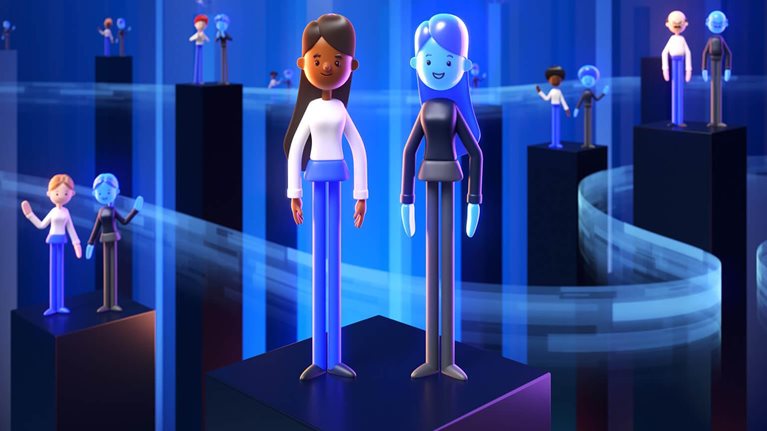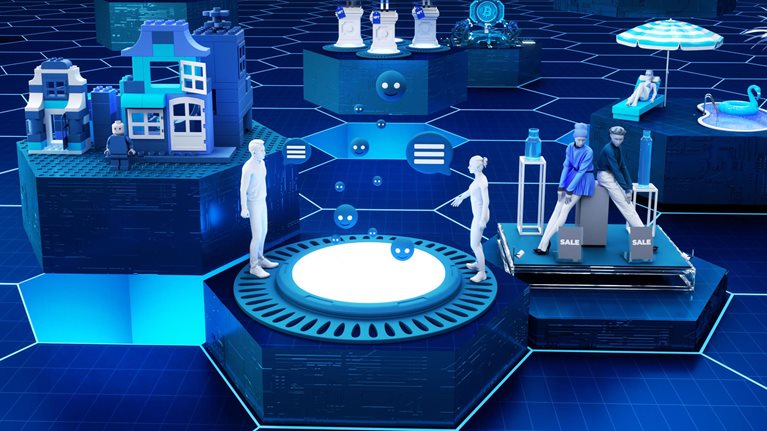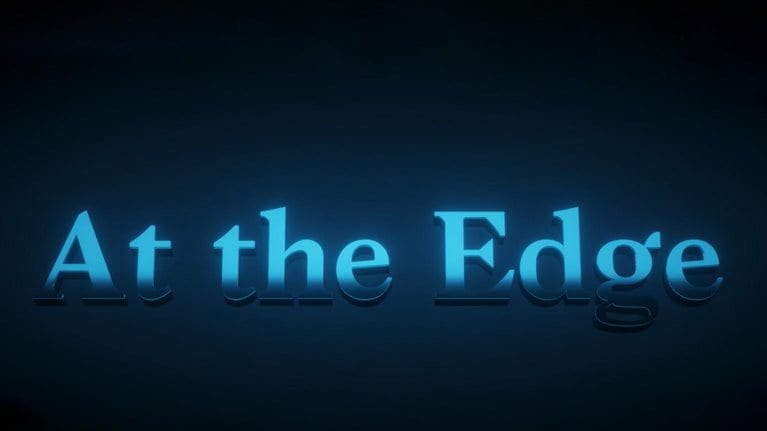How do you define the metaverse?
For me, the metaverse represents the evolution of the internet as it embraces real-time 3D as a core medium and immersive hardware platform, just like we saw the internet embrace digital, video, and mobile platforms 15 years ago.
As a result, the metaverse will respond to a fundamental need from people, when you do things in real-time 3D, everything is interactive and everything is multi-user. It will allow you to interact with everyone, so it’s social to the core. Whether it’s through collaboration in the workplace or just to spend time with the people we’d like to be with, that social aspect is something everybody will want.
And if we want to build that creator economy so our kids can have jobs we couldn’t even dream of, how do we, as citizens, regulators, and governments think about those platforms? Because they are going to be hugely important for the future, and we’ve already learned a lot from the social-media era that we need to factor in.
What are some ways the metaverse can be used beyond gaming?
It will depend on the platform. This sense of co-presence is fundamental, but you probably need a virtual reality (VR) setup or something pretty complex and immersive to read body language, catch emotional cues, and really provide the sensation you’re engaging with someone in real life.
I think that’s one of the critical capabilities we need to build, and it will probably take a decade to get there. But there will be other aspects, like the augmentation of our daily life with connected objects displaying digital content, such as glasses or windshields connected to our phones or the cloud.
You can also use interactive content and spatial computing to help people do things in real life, whether it’s navigating a city or learning about things you can’t see. If you have computer vision and cameras on your glasses, these devices know more about the environment than you because they can access databases. I think this augmentation of reality is one of the fundamental aspects of the metaverse.
What are the biggest hurdles to broader adoption?
Historically, content creation is hard, as is content publishing and sharing. With the progress of photogrammetry (gathering reliable information about physical objects via photographs), I think we’ve seen some really interesting ways to cut the costs of building digital content. So that’s innovation number one.
Innovation number two is the use of machine learning to teach neural networks what content should look like, because it makes very complex things very attainable. In terms of content delivery, we still need infrastructure upgrades, but we’re seeing good progress on cloud streaming, and when a device can passively receive 3D interactive content, it solves the problem.
The final innovation is the adoption of real-time 3D by the open web with the evolving WebGPU standard. Having a browser give universal access to 3D content will be an important part of the equation so we can consume that internet content on our web browsers.

Metaverse Talks
What needs to be done to enable a content creation economy?
It’s going to be important to create a truly creator-focused economy in the open metaverse, where creators can realize the value of their creations and not just be at the mercy of a gatekeeper that takes all the profit off the top because they are at the gate, and they can do it. We have to create a new generation of platforms that implement a better economy for creators. And that’s where, for me, things need to be fair, open, and interoperable. The technicality of making fully simulated worlds move from one platform to another is complex but give us a few years and we’ll figure it out.
Game mechanics and AI are two very powerful tools to simplify the process of content creation. If you’re an architect, you want to see what your building looks like with trees around it, or what it’s going to look like in the summer and winter. You can use game mechanics to create winter, with the leaves off the trees and snow falling from the sky and accumulating, which is not something you traditionally see.
Number two, of course, is AI. I think there’s a lot of help that we can bring to creators, using Quixel libraries, new biomes, and new environments very quickly and very cost-efficiently. That’s why we focus so much on photorealism. It’s not the be-all and end-all, but it’s something every brain understands. So, if we make a photorealistic version of anything virtually free, then creators can spend all their time and money where it makes a difference, art directing a realistic world into a fantasy world that people will want to consume.
How should executives think about ways to engage with the metaverse?
It all starts with this concept of a digital twin. I think people have to understand how they get data that can be consumed in real-time 3D, and how they get that real-time digital version of their product, available every step of the way through its life cycle. Once you have that, everything becomes easier, and then you’re ready to throw those products into the metaverse.
But that process requires changing the way you’ve been working. People have taken ten, fifteen years to digest the product lifecycle management (PLM) and building information modeling (BIM) revolutions, learning how to create in 3D along with all the enterprise-grade infrastructure. They need to evolve over the next few years to produce these digital twins, and we know it’s a big investment that won’t be easy.
You have to start there, because without the data, there is no metaverse. There is no story. It’s not about non-fungible tokens (NFTs). It’s about data. We need to focus now on the technology revolution brought by real time 3D and why it’s so important in our lives because it brings that social multi-user aspect and interactivity.
Web 2.0 is a solitary, judgmental experience right now, watching something alone and either liking or disliking what you see. I think getting into a world where you can participate and be part of the experience is going to be huge, especially for our kids. Once they understand they can have that, there’s no going back, that makes me very optimistic for the metaverse, especially after two years of a pandemic when we really understood the importance of online platforms in our daily lives.
The conversation needs to be, “What kind of platforms do we want to create? What can we learn from the past 15 years of mobile platforms?”


